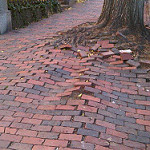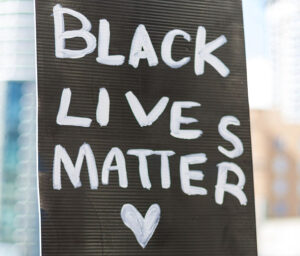Home » uncategorized (Page 3)
Category Archives: uncategorized
The Time to Unite as One America Is Now
Nearly a century ago, white supremacists attacked the Greenwood District in Tulsa Oklahoma for 18 hours, resulting in more than 800 people being admitted to hospitals, 6,000 black residents interned at large facilities and many innocents murdered.
Greenwood in 1921 was known as the Black Wall Street full of successful Black-owned businesses and entertainment spots. The police did not intervene as the town was decimated, people were murdered and the survivors callously displaced.
More recently, one in a long string of American Black men was killed in police custody. The video of the atrocity showed the same abject callousness of the officers as one of them asphyxiated him and the others watched.
His murder has sparked protests nationwide. People from all over the United States – and now the world – are protesting American police brutality and systemic oppression of Black and other people of color throughout the United States.
Justice or Just Us?
While most are peaceful, the protesters have been labeled rioters, thugs and looters without much evidence other than the color of their skin by some media outlets and politicians.
What is so striking about this is the juxtaposition of the comments made by some of the same media outlets and politicians a few weeks earlier when heavily armed, mostly White protesters stormed an American capital building threatening the governor because they were upset about stay-at-home orders during a pandemic. At that time, these protesters were called patriots, and police stood down. No arrests, no tear gas deployed, no curfews, etc. Same America, same protests, yet very different outcomes. Why?
Inflaming Racial Stereotypes to Obscure Class
Well, a time-tested political strategy used in America purposefully inflames racial stereotypes to elicit strong actions and reactions. It pointedly exploits these stereotypes while being just vague enough so the perpetrator can feign he/she had no racist intent. Referring to a city as rat-infested or immigration from a certain group as an infestation or peaceful protesters as thugs are recent examples.
What makes this practice insidious is the fact that the U.S. economic inequalities are not just part of the black or brown experience but a struggle for all Americans in the working-class. This strategy keeps many in the working and middle class disjointed and undercuts the potential unity across racial lines. Economic initiatives often proposed by progressives or moderates are viewed as handouts or bailouts by the American majority and are often rejected despite their potential to help the poor and working-class.
The idea that hard-working Americans can only look a certain way and cannot be immigrants or women or people of color or a different religion gained traction in the late 1960s with President Nixon’s southern strategy. Cue the fanning of racial tensions whenever and whoever points out that the top 1% in the United States are steadily consolidating the country’s wealth by manipulating many political, educational and religious institutions.
Toni Morrison rightly claimed that the Civil Rights Movement magnified class differences within the American landscape. This sentiment was echoed by Dr. Martin Luther King’s awareness that the working-class is caught in “an inescapable network of mutuality tied in a single garment of destiny.” But coded messages about immigrants, LGTBQ+ individuals and racial/ethnic minorities and all kinds of religious intolerance create an us versus them paradigm.
Some … Not All
Some White working-class people have been duped by this message of inclusiveness and fealty to “the race” by those with substantial class privilege. They have bought the idea that the We (Whites of all classes) have to stick together to protect our country, our flag, our women and children, and our country’s traditions as Whites – despite economic differences. It’s an imperative, or the them will take over and erase us.
The truth – known by most UUs in the working-class – is that the working-class, along with those with even less class advantage, has always been multiracial, multiethnic and multilingual. Don’t all Americans want jobs with fair wages, health care, education for their children and to be a part of the American dream?
This Time Feels Different
Groups across race, religion and class are starting to unify when they find common causes like gun reform, ending police brutality, healthcare as a human right and fighting against class inequity. UU Class Conversations is more committed than ever to help UUs identify their assumptions about their class differences and build upon the unique strengths gained from their class background. We are committed also to help you start the difficult and uncomfortable but necessary conversations that help people make connections that lead to awareness – which is integral in any transformational process.
Let’s talk about – and act upon – racial and class justice.
Sexual Predators and Blue Collar Women
Finally. The manifestation of the recognition that women’s rights ARE human rights.
That’s how I’ve been feeling about the outing of so many well-known sexual predators, long known but never punished for their predatory ways. Learning about some has broken my heart. Charlie Rose was my hero, as was John Conyers.
But, like every woman I know, I’ve experienced sexual harassment or sexual assault: #metoo. And it has felt good these past few weeks (maybe good is not quite the right word) to see that our collective voice is finally be heard and believed.
But, the more I’ve sat with this feeling of justice-being-done, the more I’ve begun to feel something ever so lightly poking at my “happy bubble.” That something is a growing knowledge that sexually harassed and assaulted cis- and transgender women with limited class privilege, especially women of color, are largely absent from the conversation about workplace harassment.
#Metoo?
While high-profile, class-advantaged women have bravely come forward to accuse Bill Cosby, Harvey Weinstein, George H.W. Bush, Roger Ailes – and on and on – of sexual assault, working-class and poor women continue to silently endure harassment and assault at sky-high rates. The male perpetrators feel no pressure to change their ways due to the increased scrutiny of predatory behavior.
They are assaulting “throwaway” women who know that if they report the assault, the odds are they will not be believed – and they will be fired, forced to move and/or further harassed. If they are believed, they will be accused of bringing it on themselves – and they too will be fired, forced to move and/or further harassed.
For example, in the new study Sexual Harassment of Women Working as Room Attendants within 5-Star Hotels 95% of the attendants reported being victims of sexual harassment or assault. The researchers cite the attendants’ low social status as the primary reason. The workers are afraid to complain, fearing retaliation by guests who will not tip them or will rate their service poorly. They are afraid to be seen as complainers by managers and fired for having a “bad attitude.”
In a Maven December 4, 2017, online forum on sexual harassment in the workplace, one woman wrote about the rampant sexual harassment and assault that women in frontline restaurant industry jobs face from coworkers, managers and patrons. “Tits get tips,” she was told. Since a number of the women in service industries are also undocumented immigrants, they are doubly vulnerable.
These are women who often work in places where there is no HR department to complain to. And as many women have said, HR is there to serve the needs of the employer, not the employees.
Status Translates to Power
I remember when working for a college in conservative upstate New York in the late 1990s, the first woman was hired by our on-campus print shop. This was touted as progress. But when the woman complained to HR about rampant sexual harassment a few months later, she was told to “man-up” by the assistant dean who also oversaw the HR department.
The women accusing Alabama senatorial candidate Roy Moore, President Donald Trump and President Bill Clinton are not prominent members of the upper-middle-class or owning-class. Their accusations have been challenged each step of the way. On the other hand, the women accusing Charlie Rose, Senator Al Franken and Matt Lauer have more class advantage. And their accusations are making heads roll.
#MeToo!
Tarana Burke created the Me Too catch-phrase in 2006 “as a grassroots movement to aid sexual assault survivors in underprivileged communities ‘where rape crisis centers and sexual assault workers weren’t going.’” It took owning-class women in 2017 to use the phrase to spur a nationwide-movement. It’s time for Burke’s trickle up effects to trickle back down and start supporting women with less class advantage in their quest for justice against sexual predators.
Denise Moorehead — This post originally appeared on our sister-site, Class Action
Sidewalks
by Elizabeth Cogliati

I didn’t used to think about sidewalks much. Not even in college or immediately after, when we walked everywhere because we didn’t have a vehicle. I went to college in a compact, eminently walkable small town, but even so, I believe I logged 4 plus miles every day. Looking back on it, I can’t believe I walked that much. Like I said, I didn’t think about sidewalks much. I just walked on them. Sometimes I climbed over the snowbanks, sometimes I slid on the ice, sometimes I slogged through the mud of the off-sidewalk shortcut, but I didn’t really think about the sidewalks.
When I moved to a bigger town, I had a more difficult time walking because the town’s neighborhoods are not easily connected to the downtown area and are not very walkable. This appears intentional. According to the city ordinances, all new neighborhoods after 1998 must not have straight throughfares directly across them and must have winding roads (older neighborhoods were grandfathered in).
After my baby was born, I discovered that the places I just strolled over by myself were major obstacles with a stroller– canals with no sidewalk along them, major intersections with only stop signs — these things frightened me with my stroller — how could I run across a 4-way stop intersection with 2 lanes in each direction with a stroller? Although I no longer needed to walk (we now had a reliable vehicle), walking was still the only form of transportation for many who did not have access to personal transportation. These sidewalks were vital arteries to the community and to needed resources.
When my baby was almost a year old, we moved into a house in one of the older neighborhoods in our town. It was easier to walk with the stroller– there were blocks and blocks of quiet neighborhood streets without busy intersections. But here I discovered another problem: the sidewalks were in pretty bad shape — large cracks, shifted sections where one section was several inches higher than the neighboring one, holes, and even non-existent sections. I became an expert at lifting the stroller up and over the many obstructions we encountered in our walks.
The more I walked, the more I noticed another problem. I didn’t just have to lift the stroller over frost heaves and root uprisings, I often had to lift it over the curbs at the intersections. There were no curb cuts at many of the intersections (a curb cut is the place where the curb dips down to meet the gutter at a driveway, intersection, or parking area). A proper curb cut usually has a yellow pad with raised dimples to alert blind walkers using a cane that they are approaching an intersection.
About this same time, I began writing opinion pieces for the local newspaper. I decided to write one of my first columns on the sidewalks in the town and their terrible condition. After the column was published, I got a surprise. Individuals in wheelchairs called and wrote to tell me how much they appreciated my column and how badly they needed better sidewalks. For people with different mobility, sidewalks can grant or block access to buildings for both recreation and much-needed resources.
I wrote a couple more columns on sidewalks, attracting more attention each time. After those columns, the city applied for and received a federal grant to improve sidewalk conditions in the business districts of town by adding curb cuts and yellow pads.
My town also has a city government program where the city will pay for homeowners to fix their sidewalks if they cannot afford to do so themselves. When I suggested this program to my neighbor, she told me she couldn’t use the program. Why? Because the program was a reimbursement program. She would have to pay up front to have the sidewalks fixed and then be reimbursed by the city. She did not have the up front money, and there were no alternatives in the city program.
When I watch the people going past my window, I see my neighbors walking their dogs, I see children going back and forth to school, I sometimes see mothers with strollers, I see white men riding bicycles in the street to work – they are usually dressed in professional attire, and I see Latino/a men and women walking with groceries and backpacks – going to and from the store and work.
Or, to put it another way, I see a variety of people from different class groups and ethnic backgrounds using the sidewalks. For some of them, riding bikes and walking are choices that make them, their children, their pets, and the planet healthier. For others, these are the only forms of transportation they can afford. If I lived near the business districts, I would also see people in wheelchairs or with canes relying on the sidewalks to enter and exit buildings.
Sidewalks are an important shared part of a community’s life. They are not a luxury item that can be neglected. The health of our sidewalks directly affects the safety of the people who rely on them every day. Sidewalks are a class issue and a disability issue.
This post has been modified to correct editorial errors that conflicted with the author’s original meaning.
Lifting Water Communion above Privilege and Trivia
 By Rev. Amy Zucker Morgenstern
By Rev. Amy Zucker Morgenstern
A Unitarian Universalist friend and I were talking about class tensions in church, and he said that he found Water Communion hard to bear because it was so much about the places people had gone on their summer vacations.
Oh yeah. I’ve been to some Water Communions that felt that way too. It is so easy for our ingathering ceremony, in which people bring water and pour it into a communal bowl, to turn into a “what I did on my summer vacation” recitation, which can make the ritual obliviously exclusive of those who don’t have summer homes, or summer vacations, or the money for airfare, or the luxury to stop working for even one week out of the year. What a shame; it’s so opposite of what the Water Communion can be.
The core symbolism of the Water Communion is that we all come from water: as a species on a planet where life began in the ocean, as mammals who float in amniotic fluid as we are readied for birth, as beings whose cells are mostly water. And yet we are separate from each other, and we have been apart–since there tends to be a slowing-down, a different rhythm in the summer months, even in churches that have services and religious education right on through the summer – and now we are reuniting. We are separate and together, the way water scatters into rain and streams and clouds and springs and ponds and puddles and yet flows together again and again, one great planetary ocean. Not only is no drop of water superior to any other; all water comes from the same place.
So the class issue is only a part of what’s awry with the “where I went this summer” approach to the ritual. Even if everyone in the world had a summer home in Provence, “This water comes from our summer home in Provence” would not be what I wanted this ceremony to be about. It’s so trivial, whereas “We are separate beings and yet all one” is one of the profoundest truths we try to encompass.
I’ve deliberately shaped our Water Communion at the Unitarian Universalist Church of Palo Alto (UUCPA) with these concerns in mind, and that conversation with my friend made me realize that other UUs could learn from that process, so I’m going to share it here. I’d also like to learn from readers: judging by this description, or by your experience of UUCPA’s Water Communion if you’ve been there, have we succeeded? And what do you do in your congregation to keep our attention focused on the deepest meanings of the Water Communion?
Here are some dos and don’ts that have guided me.
Don’t: have an open mike where everyone describes where the water came from. Not only is this impractical for any but the smallest congregations, but it just about orders people to say “We brought this from the Mediterranean, where we went on a beautiful cruise.”
Do: provide a way for people to share the significance of the water they’ve brought, and have a leader or leaders share a precis. Doing this has allowed me to rephrase people’s descriptions in a way that honors the most important aspects, while playing down the others. So, for example, if someone writes, “This water comes from our family’s summer home on Cape Cod, where I’ve gone since I was a small child visiting my grandparents–this year I was there with my grandchildren,” I might share, “Water from the Atlantic Ocean,” or “Water from a place made sacred by five generations of one family,” or “Water from a multigenerational family gathering,” or some combination of those.
Do: frequently model modest origins for your own water. I usually bring mine from my home tap, even if I’ve been somewhere exotic. (In the spirit of full disclosure, one reason is that when I do travel, I always forget to bring back a little bottleful . . . !)
Do: make reference to the water’s many sources. At UUCPA, we have banners that artistically express the four directions and elements; sometimes we use those in this service and people pour their water into a bowl under one of the banners. They can have a time of meditation to think about where their water comes from, symbolically or literally, and choose the direction/element accordingly. Jane Altman Page wrote nice words to accompany something like that here, on the Worship Web.
Don’t: just pour the water down the drain. While keeping it in the water cycle, that doesn’t honor the sacredness of the ritual. People are bringing something of themselves when they bring that “water from a special day at the beach” or “tap water from my great-grandfather’s house,” so it’s important to let them know that it will be treated with due reverence.
Do: do something important with the water. For example, carry it out ceremoniously after the service and water a special tree. . . . Bless it and invite everyone to put it on their foreheads / hands / feet / hearts. . . . We save some of ours for dedications throughout the year, and pour some in from last year’s dedication water so that the water is now gathered from many years of rituals (does anyone else do this? I don’t even remember if I came up with that idea, or inherited it on arriving in Palo Alto). I usually pour the rest out on our grounds with some words of thanks and praise. (A comment by a church member just reminded me of another possibility: invite people to bring some of the mingled water home, the way we do with the flowers at Flower Sunday, and encourage them to mindfully use it, e.g., to water a plant.)
Do: frame the ritual in terms of its larger meanings. There are so many. Our Minister of Religious Education, Dan Harper, has done a wonderful, geeky demonstration of just how many molecules of water we’re talking about, and how big a number that is. (Remember, we’re serving in Silicon Valley. When you ask, “Are there any geeks here who can come hold this paper for me?,” many hands shoot up.) He uses that to prove our literal interdependence. The year Water Communion was preceded by Hurricane Katrina, we had to talk about the destructive power of water, and that was a chance to go into some theological depth.
And, if you’re reminding folks about Water Communion now, as summer starts,don’t emphasize that they should bring their water back from special travels. There’s no need to mention travel at all. This year, my reminder in the newsletter said “We bring water from the places of our lives.”
I’d love to hear what others do.
Rev. Amy Zucker Morgenstern is the minister at the Unitarian Universalist Church of Palo Alto and author of the blog Sermon in Stones, which she began in 2010. In her posts, she explores matters of religion (theology, ecclesiology, congregational dynamics, you name it), art, literature, politics, philosophy, and culture.


